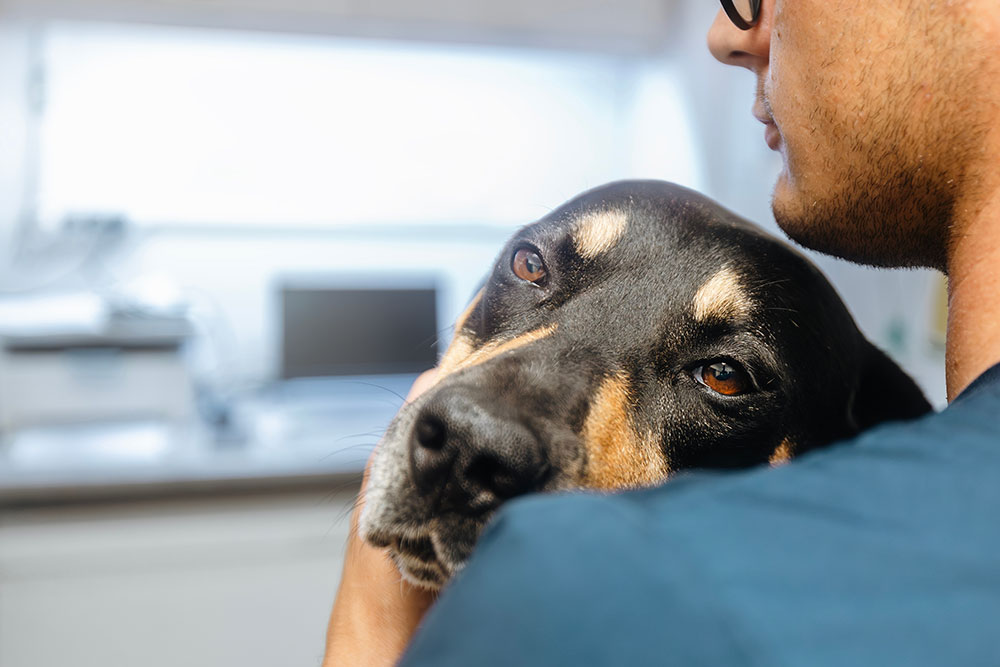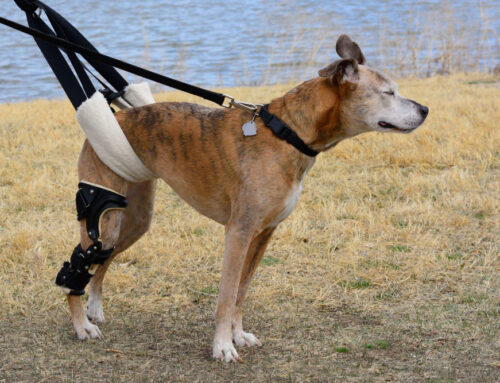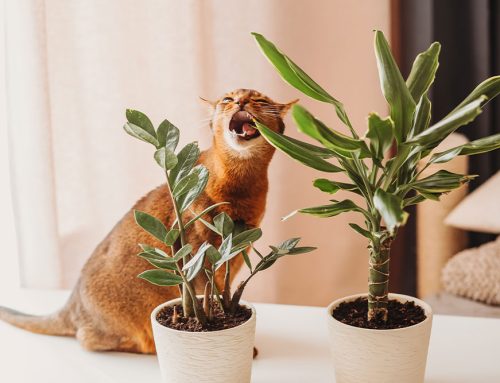Reading Your Pet’s Body Language: Subtle Clues They’re in Pain
Your dog no longer runs to the door to greet you. Your cat avoids the sunny windowsill she used to claim every afternoon. Instead, they move slowly, hesitate before lying down, or shy away from being touched. These subtle changes can be easy to dismiss as “just getting older,” but often they signal something more serious: chronic pain.
At Flora Family Vet in Kissimmee, Florida, we know how worrying it is when your pet isn’t acting like themselves. Since pets can’t tell us what hurts, it’s up to us to notice the clues—and with timely care, we can relieve pain, restore comfort, and bring joy back to their daily routines.
Pain is more than just discomfort- it affects mood, mobility, and overall quality of life. The sooner we identify and treat pain, the sooner your pet can get back to being their usual happy, tail-wagging (or purring) self.
Understanding Pet Pain: Why It Matters
Pain in pets can be acute (sudden and short-lived) or chronic (long-lasting and often subtle). Animals instinctively hide pain as a survival mechanism, which means their signals are easy to miss. Left untreated, pain not only reduces comfort but can also lead to muscle loss, changes in behavior, and even permanent health problems.
Some of the most common conditions that cause pain in pets include arthritis, injuries, dental disease, post-surgical discomfort, and cancer. Even mild pain deserves attention, because early treatment prevents more serious complications later on.
Recognizing the Signs: What Pain Looks Like
Our pets may not speak, but they communicate through body language, behavior, and subtle changes.
Changes in Posture and Movement
- Limping or lameness, especially after exercise. If you’re wondering what could be behind it, common causes of limping in dogs range from sprains to arthritis.
- Stiffness or hesitation when getting up or climbing stairs
- Arched back or hunched posture suggesting abdominal or spinal pain
Behavioral Shifts
- Loss of interest in play or daily walks
- Avoiding touch, hiding, or becoming unusually withdrawn
- Increased irritability or aggression when handled
Vocalization and Facial Expression
- Whining, growling, or yelping when moving
- Cats may purr excessively when in pain
- Subtle facial cues like squinting, lowered ears, or tightened jaws. The Feline Grimace Scale is a helpful tool to interpret feline pain expressions.
When Pain Is an Emergency
Not all discomfort can wait for a routine appointment. Flora Family Vet provides urgent care services during regular hours, with an urgent care doctor available for same-day appointments. After-hours cases are referred to trusted local ER hospitals.
How We Diagnose Pain at Flora Family Vet
Accurately identifying pain requires both medical expertise and advanced tools. At Flora Family Vet, we combine physical exams with leading diagnostics:
- In-House Laboratory Services – Our diagnostic lab provides same-day bloodwork, heartworm tests, and parasite screens. A Sedivue machine performs real-time urine analysis to detect infections, crystals, or bladder disease.
- Digital Radiology – High-quality digital radiographs give a clear view of the musculoskeletal, gastrointestinal, and urinary systems. They are more sensitive than traditional film X-rays and can detect subtle fractures, stones, or foreign objects.
- Ultrasound Imaging – Ultrasound allows us to view abdominal organs, bladder stones, intestinal obstructions, chest masses, and even musculoskeletal injuries.
- Echocardiograms – Non-invasive heart scans evaluate cardiac structure and function in real time, ensuring heart pain or weakness isn’t missed.
- Mobile CT Partnership – For complex cases, we partner with mobile services to provide 3D CT imaging that maps difficult-to-diagnose problems in greater detail.
By using multiple diagnostic modalities, we can pinpoint the source of your pet’s pain with accuracy and tailor treatment appropriately.
Treatment Options: Tailored to Each Pet
Managing pain often requires multiple approaches working together.
Medications
Veterinary pharmacology has advanced significantly in recent years. Drugs commonly used to relieve pain include NSAIDs formulated specifically for pets, which safely reduce inflammation, as well as adjunctive drugs like gabapentin for nerve pain. For osteoarthritis, cutting-edge monoclonal antibody injections- Librela for dogs and Solensia for cats– provide long-lasting relief without the organ stress associated with some traditional medications.
Surgery When Needed
When pain stems from injuries, fractures, or severe joint disease, surgical correction may be necessary. Our surgical services are performed with advanced anesthesia monitoring and tailored pain protocols to support recovery.
Physical Rehabilitation
Targeted exercises, hydrotherapy, and stretching build strength and flexibility. Veterinary physical rehabilitation is especially helpful for pets with arthritis, cruciate ligament injuries, or post-surgical recovery.
Complementary Therapies
- Acupuncture for animals has been shown to improve circulation and reduce pain.
- Therapeutic laser therapy decreases inflammation and supports tissue healing. Our in-house laser therapy program provides drug-free pain relief for arthritis, wounds, and more.
Together, these therapies form a multimodal plan that maximizes comfort while minimizing risks.
Why Treating Pain Matters
Leaving pain untreated can have lasting consequences:
- Muscle wasting due to inactivity
- Increased anxiety, depression, or aggression
- Chronic pain syndromes where the nervous system becomes hypersensitive
By intervening early, we not only relieve suffering but also protect long-term health and emotional well-being.
Managing Pain at Home
What happens at home is just as important as what happens in the clinic. Simple lifestyle adjustments can dramatically improve your pet’s comfort:
- Provide orthopedic bedding or heated pads for achy joints
- Use ramps or stairs to reduce stress on hips and knees
- Encourage short, frequent walks instead of long, strenuous ones
- Keep nails trimmed to improve stability and reduce strain
- Incorporate range-of-motion exercises or gentle play sessions
- Support mobility with harnesses or slings if your pet struggles to rise
The Mobility Matters guide offers additional strategies for making your home safer and more supportive.
Routine Care and Prevention
Ongoing care plays a major role in keeping pets comfortable:
- Wellness and preventive care helps us spot subtle issues before they worsen.
- Regular dental care prevents oral pain that often goes unnoticed until it’s severe.
- Our AAHA accreditation ensures we meet the highest standards of veterinary medicine in every aspect of care.
Your Partner in Pet Comfort and Care
At Flora Family Vet, our mission is simple: no pet should live in pain. From advanced diagnostics to laser therapy, from urgent care during open hours to preventive wellness planning, we are here to provide comprehensive, compassionate solutions.
If you’ve noticed your pet slowing down, limping, or acting differently, don’t wait. Call us at (407) 545-8255 or contact us online to schedule an exam. Together, we’ll find the source of the problem and create a plan that restores your pet’s comfort and joy.









Leave A Comment